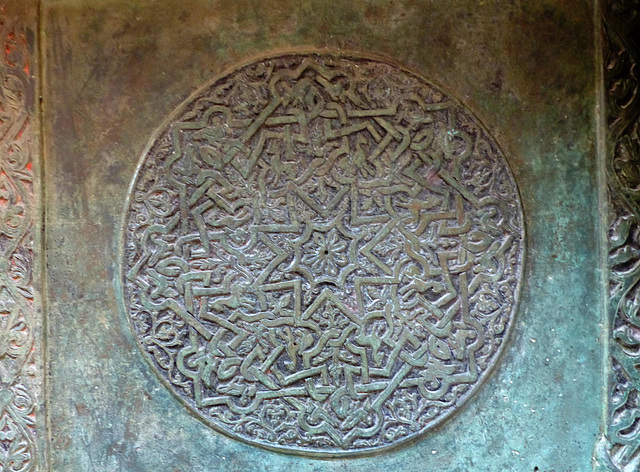Canosa di Puglia - Mausoloei di Boemondi
Canosa di Puglia - Mausoloei di Boemondi
Canosa di Puglia - Mausoloei di Boemondi
Canosa di Puglia - Mausoloei di Boemondi
Castel del Monte
Castel del Monte
Castel del Monte
Castel del Monte
Castel del Monte
Castel del Monte
Castel del Monte
Corato - Chiesa di San Vito
Corato - Chiesa di Santa Maria Maggiore
Corato - Chiesa di Santa Maria Maggiore
Ruvo di Puglia - Concattedrale di Ruvo di Puglia
Ruvo di Puglia - Concattedrale di Ruvo di Puglia
Ruvo di Puglia - Concattedrale di Ruvo di Puglia
Ruvo di Puglia - Concattedrale di Ruvo di Puglia
Ruvo di Puglia - Concattedrale di Ruvo di Puglia
Ruvo di Puglia - Concattedrale di Ruvo di Puglia
Ruvo di Puglia - Concattedrale di Ruvo di Puglia
Ruvo di Puglia - Concattedrale di Ruvo di Puglia
Bari - Amarumar
Canosa di Puglia - Mausoloei di Boemondi
Canosa di Puglia - Mausoloei di Boemondi
Canosa di Puglia - Basilica di San Sabino
Canosa di Puglia - Basilica di San Sabino
Canosa di Puglia - Basilica di San Sabino
Canosa di Puglia - Basilica di San Sabino
Canosa di Puglia - Basilica di San Sabino
Canosa di Puglia - Basilica di San Sabino
Canosa di Puglia - Basilica di San Sabino
Canosa di Puglia - Basilica di San Sabino
Canosa di Puglia - Basilica di San Sabino
Canosa di Puglia - Basilica di San Sabino
Canosa di Puglia - Basilica di San Sabino
Puglia
Bovino - Chiesa di San Marco
Bovino - Chiesa di San Marco
Bovino - Concattedrale di Santa Maria Assunta
Bovino - Concattedrale di Santa Maria Assunta
Bovino - Concattedrale di Santa Maria Assunta
Bovino - Concattedrale di Santa Maria Assunta
Bovino
Orsara di Puglia - Abbazia St. Angelo / Grotta St.…
Location
Keywords
Authorizations, license
-
Visible by: Everyone -
All rights reserved
-
122 visits
Canosa di Puglia - Mausoloei di Boemondi


Legends tell, that the Homeric hero Diomedes founded "Canusion", the town existed already in early Etrscian times and later became a Greek polis. In Roman times it was a colony and had a large amphitheatre. End of the 3rd century it was the capital of Apulia and Calabria.
Bishops are known here already in the 4th century, when one of them took part in a Council. The area suffered from Muslim invasions and got completely destroyed in 844. Rebuilding took place a century later, It was under Lombardian rule until the Norman conquest and the establishement of the Kingdom of Sicily.
The Cathedral of San Sabino was founded in the 8th century by the Lombards. When it was comleted in 1101 it was named after St. Sabinus of Canosa in 1101. It was an example of Romanesque/Byzantine style.
The "Mausoleum of Bohemond" was built after 1111 against the right wall of the cathedral´s transept. It hold the remains of Bohemond I of Antioch, son of Robert Guiscard and Prince of Taranto and Antioch. He was on of the leaders of the First Crusade.
The rectangular mausoleum has an upper part characterized by a polygonal drum and a hemispherical dome. Originally the dome was hidden by a pyramidal cover. Scholars concur, that the construction of the mausoleum reveals the influence of Islamic models, in particular Antiochian shrines.
The mausoleum is known for its finely crafted bronze door. The leaves of the door are distinct is size, style and technique of execution. The left leaf, cast in a single piece, is decorated by three discs. The right leaf is composed of four panels joint together by slots. There are as well discs. Here is the lowest disc of the right leave. In the center a star and all around are Islamic motifs. I could find some horses (?), birds and maybe kufic scripts.
Bishops are known here already in the 4th century, when one of them took part in a Council. The area suffered from Muslim invasions and got completely destroyed in 844. Rebuilding took place a century later, It was under Lombardian rule until the Norman conquest and the establishement of the Kingdom of Sicily.
The Cathedral of San Sabino was founded in the 8th century by the Lombards. When it was comleted in 1101 it was named after St. Sabinus of Canosa in 1101. It was an example of Romanesque/Byzantine style.
The "Mausoleum of Bohemond" was built after 1111 against the right wall of the cathedral´s transept. It hold the remains of Bohemond I of Antioch, son of Robert Guiscard and Prince of Taranto and Antioch. He was on of the leaders of the First Crusade.
The rectangular mausoleum has an upper part characterized by a polygonal drum and a hemispherical dome. Originally the dome was hidden by a pyramidal cover. Scholars concur, that the construction of the mausoleum reveals the influence of Islamic models, in particular Antiochian shrines.
The mausoleum is known for its finely crafted bronze door. The leaves of the door are distinct is size, style and technique of execution. The left leaf, cast in a single piece, is decorated by three discs. The right leaf is composed of four panels joint together by slots. There are as well discs. Here is the lowest disc of the right leave. In the center a star and all around are Islamic motifs. I could find some horses (?), birds and maybe kufic scripts.
- Keyboard shortcuts:
Jump to top
RSS feed- Latest comments - Subscribe to the comment feeds of this photo
- ipernity © 2007-2024
- Help & Contact
|
Club news
|
About ipernity
|
History |
ipernity Club & Prices |
Guide of good conduct
Donate | Group guidelines | Privacy policy | Terms of use | Statutes | In memoria -
Facebook
Twitter

Sign-in to write a comment.